This article provides insufficient context for those unfamiliar with the subject.(February 2023) |
This is a list of fighter aces in World War II from the Republic of China.
This article provides insufficient context for those unfamiliar with the subject.(February 2023) |
This is a list of fighter aces in World War II from the Republic of China.

Claire Lee Chennault was an American military aviator best known for his leadership of the "Flying Tigers" and the Chinese Nationalist Air Force in World War II.

The La Fayette Escadrille was the name of the French Air Force unit escadrille N 124 during the First World War (1914–1918). This escadrille of the Aéronautique Militaire was composed largely of American volunteer pilots flying fighters. It was named in honor of the Marquis de Lafayette, French hero of the American Revolutionary War. In September 1917, the escadrille was transferred to the United States Army under the designation 103rd Aero Squadron. In 1921, the French Air Force recreated a N124 unit who claimed lineage from the war-time La Fayette escadrille and is now part of the escadron 2/4 La Fayette.

The First American Volunteer Group (AVG) of the Republic of China Air Force, nicknamed the Flying Tigers, was formed to help oppose the Japanese invasion of China. Operating in 1941–1942, it was composed of pilots from the United States Army Air Corps (USAAC), Navy (USN), and Marine Corps (USMC), and was commanded by Claire Lee Chennault. Their Curtiss P-40B Warhawk aircraft, marked with Chinese colors, flew under American control. Recruited under President Franklin Roosevelt's authority before Pearl Harbor, their mission was to bomb Japan and defend the Republic of China, but many delays meant the AVG first flew in combat after the US and Japan declared war.

The Curtiss A-12 Shrike was the United States Army Air Corps' second monoplane ground-attack aircraft, and its main attack aircraft through most of the 1930s. It was based on the A-8, but had a radial engine instead of the A-8's inline, water-cooled engine, as well as other changes.

A flying ace, fighter ace or air ace is a military aviator credited with shooting down five or more enemy aircraft during aerial combat. The exact number of aerial victories required to officially qualify as an ace is varied but is usually considered to be five or more.
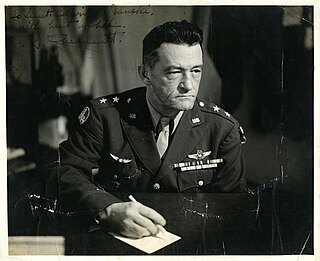
The American Volunteer Groups were volunteer air units organized by the United States government to aid the Nationalist government of China against Japan in the Second Sino-Japanese War. The only unit to actually see combat was the 1st AVG, popularly known as the Flying Tigers.
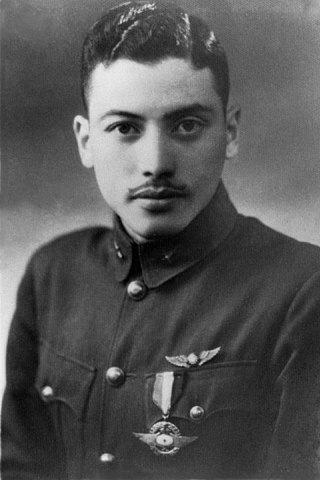
Arthur Tien Chin was a pilot from the United States who participated in the Second Sino-Japanese War. Chin was compelled to defend his father's homeland when Japan invaded China. He was part of the first group of U.S. volunteer combat aviators. Chin is recognized as the United States' first flying ace in World War II.
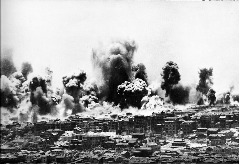
The bombing of Chongqing, from 18 February 1938 to 19 December 1944, was a series of massive terror bombing operations authorized by the Empire of Japan's Imperial General Headquarters and conducted by the Imperial Japanese Army Air Service (IJAAF) and Imperial Japanese Navy Air Service (IJNAF). Resistance was put up by the Chinese Air Force and the National Revolutionary Army's anti-aircraft artillery units in defense of the provisional wartime capital of Chongqing and other targets in Sichuan.

The Chinese Nationalist Air Force or simply The Republic of China Air Force was the Air Force formed by the Kuomintang (KMT) after the establishment of the Aviation Ministry in 1920. As tensions mounted between China and Imperial Japan in the 1930s, air units from the Chinese warlords, including those from the Guangdong Provincial Air Force, and overseas Chinese aviators, became integrated into the centralized command of the ROCAF and coordinating with the Second United Front to counter the Imperial Japanese invasion and occupation.
The Battle of South Guangxi was one of the 22 major engagements between the National Revolutionary Army and Imperial Japanese Army during the Second Sino-Japanese War.
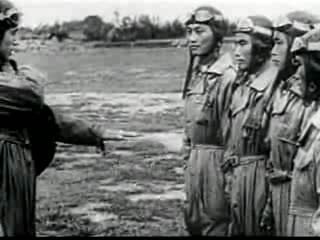
The Second Sino-Japanese War began on 7 July 1937 with the Marco Polo Bridge incident in the Republic of China and is often regarded as the start of World War II as full-scale warfare erupted with the Battle of Shanghai, and ending when the Empire of Japan surrendered to the Allies in August 1945. The Chinese Air Force faced the Imperial Japanese Army and Navy Air Forces and engaged them in many aerial interceptions, including the interception of massed terror-bombing strikes on civilian targets, attacking on each other's ground forces and military assets in all manners of air interdiction and close air support; these battles in the Chinese skies were the largest air battles fought since World War I, and featured the first-ever extensive and prolonged deployment of aircraft carrier fleets launching preemptive strikes in support of expeditionary and occupation forces, and demonstrated the technological shift from the latest biplane fighter designs to the modern monoplane fighter designs on both sides of the conflict.

The Canton Operation was part of a campaign by Japan during the Second Sino-Japanese War to blockade China to prevent it from communicating with the outside world and importing needed arms and materials. Control of Guangzhou (Canton) and the Pearl River Delta would provide a base to make the blockade of Guangdong province more effective by seizing southern China's major port and isolate the British port of British Hong Kong.
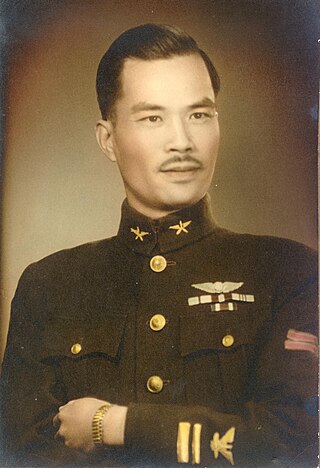
"Clifford" Louie Yim-qun, also known as Louie Yen-chung, was a Chinese-American pilot and military officer in the Republic of China. Louie's father was from Taishan county, Guangdong, China, but Louie was born in Seattle, Washington. He obtained a private pilot's license at the Portland Flying School, Oregon, and went to China in 1933. One of the other pilots in Portland was Hazel Ying Lee, who later became his wife. She was the first Chinese American to volunteer for the Women Airforce Service Pilots. Louie died in 1999 in Taipei, Taiwan.
Liangping Airport, also called Liangshan Airport, is a former dual-use military and civil airport, located north of Liangping District in Chongqing Municipality, China. It served the city of Wanxian from July 1988 until May 2003, when all civil flights were transferred to the new Wanzhou Wuqiao Airport.

The Chinese-American Composite Wing (Provisional) was a combined United States Army Air Forces and Republic of China Air Force unit. It was administratively assigned under Fourteenth Air Force in China throughout its service from 1 October 1943 – 1 August 1945. CACW succeeded the First American Volunteer Group (AVG) after AVG was disbanded in July 1942. The AVG's famed nickname Flying Tigers was also adopted by CACW. CACW leadership was led by previous AVG commander Clare Lee Chennault, who was promoted to the rank of Major-General.

Heroes of the Eastern Skies, is a Chinese war drama filmed in Taiwan, R.O.C. and based on the true story of a small group of Chinese flying aces in 1937 at the beginning of the Second Sino-Japanese War, specifically depicting events in the Battle of Shanghai, Battle of Nanking and the Battle of Taierzhuang; the movie was released on 7 July 1977 in commemoration of the 7/7 Incident which sparked the start World War II in Asia.
Zhu Binhou, also known as Etienne Tsu, was an early Chinese aviator. Born in Shanghai, Zhu was a son of the prominent banker Zhu Zhiyao. He left for France to study mechanical engineering at the Université Lille 1, graduating in 1903. As he was fascinated with the design and operation of automobiles and ships, 1903 also brought about the revolutionary advent of the controlled, sustained, and powered heavier-than-air machines, which had driven Zhu Binhou into this new frontier of human flight.
Throughout the Second Sino-Japanese war (1937–1945), Japanese dissidents and Japanese prisoners of war (POWs) joined the Chinese in the war against the Empire of Japan.
Huang Panyang was a Chinese-American aviator who volunteered to serve in the Chinese Air Force in the looming war against the Imperial Japanese invasion and occupation; first entering service in China with the previously-separated "warlord air force" under Guangdong provincial leader General Chen Jitang, before centralizing under the Nationalist Chinese Air Force of the Republic of China.
Cen Zeliu, also Shum Tsak-lau(Cantonese), was born in Enping, Guangdong, China. He trained at the Guangdong provincial aviation academy as a fighter pilot, graduating in 1934, and was attached to the provincial warlord air force of General Chen Jitang. With the imminence of war between China and the Empire of Japan brewing ever since the Manchurian Incident of 1931, Cen Zeliu and his compatriots were indignant about taking the fight back to the Imperial Japanese invasion and occupation.